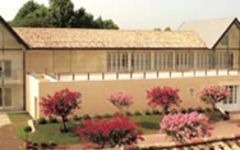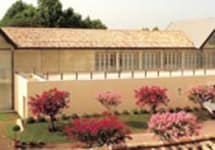Chateau Leoville Poyferre 2020
-
Jeb
Dunnuck - Vinous
-
James
Suckling - Decanter
-
Wine
Enthusiast -
Wine
Spectator -
Robert
Parker



Product Details
Your Rating
Somm Note
Winemaker Notes
Blend: 64% Cabernet Sauvignon, 31% Merlot, 3% Cabernet Franc, 2% Petit Verdot
Professional Ratings
-
Jeb Dunnuck
The Grand Vin 2020 Chateau Leoville Poyferre, which is released in a stylish black bottle commemorating a century for the Cuvelier family, is reminiscent of the 2016 with its powerful, concentrated, yet vibrant and inward style. Pure creme de cassis, melted chocolate, loamy earth, graphite, and some spicy nuances all define the aromatics, and it's full-bodied, with a stacked mid-palate, nicely integrated oak, ripe tannins, and one hell of a great finish. This is another utterly brilliant wine from this team, which has been producing First Growth quality wines for many years now. The blend of the 2020 is 64% Cabernet Sauvignon, 31% Merlot, 3% Cabernet Franc, and the rest Petit Verdot, aged in 80% new barrels, hitting 13.58% natural alcohol and a pH of 3.81. Best After 2028.
Rating: 98+
-
Vinous
The 2020 Léoville-Poyferré is every bit as impressive as it was from barrel. If anything, it has gained in freshness and vibrancy with élevage. Dark cherry, plum, mocha, graphite and a kiss of French oak are some of the many notes that infuse the 2020 with tons of character. I especially admire its vertical energy and buttoned up personality. In some recent vintages Léoville-Poyferré has been quite showy, but the 2020 also has a more nuanced side that is hugely appealing. Best after 2028.
-
James Suckling
This is really floral on the nose with violets and roses, and some black berries and dark cherries. It’s medium- to full-bodied with firm and polished tannins, and plenty of hazelnut and milk chocolate. Structured, yet so finely textured. So attractive and enticing now but needs three or four years to show what it has. Try after 2026.
-
Decanter
Supple and generous with mouthwatering acidity, though really quite tannic at this point which does cover up some of the nuance. I like the texture, the frame and the weight, it's clean, polished and well worked, not overdone at all, but this has a sense of potent seduction in the flavours, rich blackcurrant, perfumed and scented. Detailed with lots of stony, slate, and wet stone elements giving a wonderful terroir influence. It's not as immediately charming as the 2019, the tension still prominent, but this will be brilliant in 5-10 years.
-
Wine Enthusiast
Of course, this impressive classified growth wine is young. But it’s easy to discern its promise. Black fruits and layers of sophisticated tannins are balanced with the wood aging and smoky fruit flavors. This estate in the heart of Saint-Julien has produced a very fine wine, fresh and structured at the same time. Drink from 2026.
Cellar Selection -
Wine Spectator
Showy and very hard to resist, this gushes with velvety plum and boysenberry reduction flavors, along with melted black licorice and violet hints along the way. This has a very cold cast iron note buried deeply on the finish, too, to keep it grounded. A very distinctive house style. Cabernet Sauvignon, Merlot, Cabernet Franc and Petit Verdot. Best from 2030 through 2038.
-
Robert Parker's Wine Advocate
A rich, powerful wine, the 2020 Léoville Poyferré offers up aromas of sweet berries, blueberry liqueur, exotic spices, incense and creamy new oak. Full-bodied, broad and layered, it's deep and concentrated, its ample core of fruit only partially concealing a hefty payload of sweet, powdery, generously extracted tannin. Poyferré is generally the most flamboyant and demonstrative of the three Léovilles, but in 2020, it's chunkier, broader shouldered and more brooding than usual. Best after 2030. Rating: 94+
Other Vintages
2024-
James
Suckling - Vinous
- Vinous
-
Jeb
Dunnuck - Decanter
-
James
Suckling -
Robert
Parker
-
Jeb
Dunnuck -
James
Suckling - Decanter
-
Robert
Parker -
Wine
Spectator
- Vinous
-
James
Suckling - Decanter
-
Jeb
Dunnuck -
Wine
Spectator -
Robert
Parker
-
Jeb
Dunnuck -
James
Suckling -
Wine
Spectator - Decanter
-
Robert
Parker
-
Jeb
Dunnuck -
James
Suckling -
Wine
Spectator -
Robert
Parker -
Wine
Enthusiast - Decanter
-
Wine
Enthusiast -
Jeb
Dunnuck -
James
Suckling -
Robert
Parker - Decanter
-
Wine
Spectator
-
Jeb
Dunnuck -
Wine
Spectator -
Robert
Parker -
James
Suckling -
Wine
Enthusiast - Decanter
-
Jeb
Dunnuck -
Wine
Enthusiast -
James
Suckling - Decanter
-
Wine
Spectator -
Robert
Parker
- Decanter
-
Wine
Enthusiast -
James
Suckling -
Jeb
Dunnuck -
Wine
Spectator -
Robert
Parker
-
Wine
Enthusiast -
James
Suckling -
Jeb
Dunnuck -
Robert
Parker -
Wine
Spectator -
Wilfred
Wong
-
Wine
Enthusiast -
Robert
Parker -
James
Suckling -
Wine
Spectator
-
Jeb
Dunnuck -
Wine
Enthusiast -
Robert
Parker -
James
Suckling -
Wine
Spectator
-
Robert
Parker -
Jeb
Dunnuck -
James
Suckling - Decanter
-
Wine
Enthusiast -
Wine
Spectator
-
Wine
Enthusiast -
Robert
Parker -
James
Suckling -
Wine
Spectator -
Connoisseurs'
Guide
-
Wine &
Spirits -
Wine
Enthusiast -
Robert
Parker -
Wine
Spectator
-
James
Suckling -
Wine &
Spirits -
Wine
Enthusiast -
Robert
Parker -
Wine
Spectator -
Connoisseurs'
Guide
-
Jeb
Dunnuck -
Robert
Parker -
Wine
Enthusiast -
Wine
Spectator
-
Robert
Parker -
Jeb
Dunnuck -
James
Suckling -
Wine
Spectator -
Wine
Enthusiast
-
Robert
Parker
-
Wine
Enthusiast -
Robert
Parker -
Wine
Spectator
-
Robert
Parker -
Jeb
Dunnuck -
Wine
Spectator -
James
Suckling - Decanter
-
Wine &
Spirits
-
Wine &
Spirits
-
Wine
Spectator
-
Robert
Parker -
Wine
Spectator
-
Wine
Spectator -
Robert
Parker
-
Robert
Parker -
Wine
Spectator
-
Wine
Spectator
-
Robert
Parker -
Jeb
Dunnuck -
James
Suckling -
Wine
Spectator


Major investments were made to bring out the best in the vineyards, and the cellars were also renovated. In 1994, noted consulting oenologist Michel Rolland began to offer his precious winemaking advice. The final blend is made after many careful tastings. Chateau Léoville Poyferré is aged in oak barrels, 75% of which are new every year. It is an extremely well-balanced wine with a great deal of finesse and excellent aging potential.

One of the world’s most classic and popular styles of red wine, Bordeaux-inspired blends have spread from their homeland in France to nearly every corner of the New World. Typically based on either Cabernet Sauvignon or Merlot and supported by Cabernet Franc, Malbec and Petit Verdot, the best of these are densely hued, fragrant, full of fruit and boast a structure that begs for cellar time. Somm Secret—Blends from Bordeaux are generally earthier compared to those from the New World, which tend to be fruit-dominant.

An icon of balance and tradition, St. Julien boasts the highest proportion of classed growths in the Médoc. What it lacks in any first growths, it makes up in the rest: five amazing second growth chateaux, two superb third growths and four well-reputed fourth growths. While the actual class rankings set in 1855 (first, second, and so on the fifth) today do not necessarily indicate a score of quality, the classification system is important to understand in the context of Bordeaux history. Today rivalry among the classed chateaux only serves to elevate the appellation overall.
One of its best historically, the estate of Leoville, was the largest in the Médoc in the 18th century, before it was divided into the three second growths known today as Chateau Léoville-Las-Cases, Léoville-Poyferré and Léoville-Barton. Located in the north section, these are stone’s throw from Chateau Latour in Pauillac and share much in common with that well-esteemed estate.
The relatively homogeneous gravelly and rocky top soil on top of clay-limestone subsoil is broken only by a narrow strip of bank on either side of the “jalle,” or stream, that bisects the zone and flows into the Gironde.
St. Julien wines are for those wanting subtlety, balance and consistency in their Bordeaux. Rewarding and persistent, the best among these Bordeaux Blends are full of blueberry, blackberry, cassis, plum, tobacco and licorice. They are intense and complex and finish with fine, velvety tannins.
